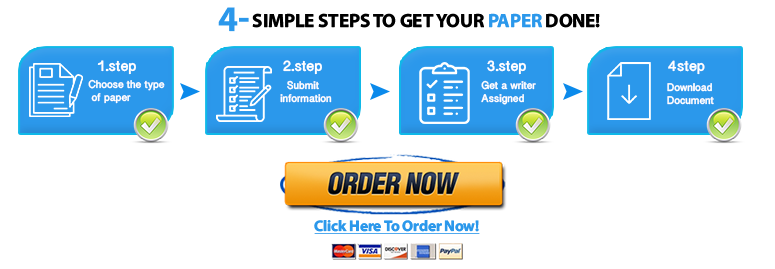Jung believed that one of the main purposes of analysis was to assist clients in their

1.1. The Use of the Couch in Psychoanalysis
As you may have learned by now, in classical or “orthodox” psychoanalysis, Freud would invite his clients (called “analysands”) to lie down on a couch while they were talking freely about anything that came to mind, as they self-reflected (the process of free association). All along, Freud would be seated on a chair behind the client, out of the client’s sight, and only interject verbally from time to time, in order to encourage further client self-exploration.
Nowadays, many psychoanalytically oriented counsellors prefer to dialogue with their clients face-to-face. What do you think is gained and what is lost in the face-to-face format? Do you think that the 3 basic tools of psychoanalysis (i.e., analysand’s self-reflection and insight, analysand’s transference, and therapist’s countertransference) can be used more or less effectively in the couch format compared to the face-to-face setting?
1.2. Jung’s Concept of Individuation
Jung believed that one of the main purposes of analysis was to assist clients in their process of individuation. As a counsellor operating from a Jungian perspective, how would you practically work with the client towards that goal?
Expert Answer and Explanation
1.1. The Use of the Couch in Psychoanalysis
One of the gains of face-to-face counseling format is that the counselor can understand the clients’ feelings by watching their body language. Redekop et al. (2017) say that human communication comprises only 7% words and 93% paralinguistic cues and body language. The author notes that body language speaks a lot compared to words. Therefore, a face-to-face format can help a therapist understand the emotions and feelings of the client just by looking at them.
The face-to-face format helps a counselor build a stronger relationship with the clients. Face-to-face communication during counseling can be used for persuasion and engagement. A positive relationship between a therapist and a client can help in outcome achievements. Though face-to-face is one of the best therapy techniques, some clients do not like to have eye contact when sharing their feelings. Hence, in this case, the clients will not be open and say what they feel has it would be in a couching technique (Safran et al., 2019).
In face-to-face format, the therapist and the client may be required to be extremely polite, nod, smile in approval and understanding, and therefore, this can prevent the client from being transparent, self-reflective, and insightful. Couch formal can help the therapist listen and think deeper at the client’s expressions and provide proper countertransference. What are some of the advantages and disadvantages of the couch format?
References
Redekop, F., Luke, C., & Malone, F. (2017). From the couch to the chair: Applying psychoanalytic theory and practice in counseling. Journal of Counseling and Development, 95, 100-109. Retrieved from https://search-ebscohost-com.libraryservices.yorkvilleu.ca/login.aspx?direct=true&AuthType=url,cookie,ip,uid&db=a9h&AN=120533859
Safran, J. D., Kriss, A. & Foley, V. K. (2019). Psychoanalytic therapies. In D. Wedding & R. J. Corsini (Eds.), Current psychotherapies (11th ed.) pp. 21-58. Boston, MA: Cengage.
1.2. Jung’s Concept of Individuation
Individuation can be defined as the process where an individual achieves a sense of individuality separate from others’ identities and start to exist in the human world consciously (Galipeau, 2013). In other words, it a therapeutic practice where the therapist helps the clients achieve their true-self. A therapist can practically work with clients to achieve individuality by guiding them on how to go about the issue.
The therapist can also help the client by encouraging and supporting them. Encouraging clients to identify their true selves can motivate them to continue the search for their unique individuality. One of the ways to encourage the clients to identify their true selves is by allowing them to speak their minds freely without interference (Dehing, 1992).
You can do this by allowing the clients to sleep on the couch and say their mind without interference. A therapist can also help clients identify their individuality by asking them to listen to their inner voice or dialogues. The clients’ inner dialogues can change extemporaneously as they embody for Self. As a result, they can start knowing themselves and stop berating themselves about how they feel. The clients may feel lighter, free, and open after allowing themselves to listen to their inner voices.
References
Dehing, J. (1992). The therapist’s interventions in Jungian analysis. Journal of Analytical Psychology, 37, 29-47. Retrieved from https://search-ebscohost-com.libraryservices.yorkvilleu.ca/login.aspx?direct=true&AuthType=url,cookie,ip,uid&db=a9h&AN=12234171
Galipeau, S. (2013). The Red Book and Jung’s typology. Psychological Perspectives, 56, 34-49.
Place your order now on a similar assignment and get fast, cheap and best quality work written by our expert level assignment writers.
FAQs
Jungian therapy techniques
Jungian therapy is a type of psychotherapy that is based on the ideas and teachings of Carl Jung, a Swiss psychiatrist and psychoanalyst. The goal of Jungian therapy is to help individuals explore their unconscious mind and to integrate their conscious and unconscious aspects, leading to a more holistic and authentic sense of self.
Here are some common techniques used in Jungian therapy:
- Active Imagination: This technique involves accessing and exploring the unconscious through imaginative visualization, dream analysis, and other forms of creative expression.
- Dream Analysis: Dreams are seen as an important source of information about the unconscious mind, and Jungian therapists often use dream analysis to help clients gain insight into their psychological and emotional state.
- Archetypal Analysis: Jung believed that humans are born with certain innate universal patterns of thought and behavior, which he called archetypes. In Jungian therapy, these archetypes are explored and integrated into the client’s conscious awareness.
- Shadow Work: The “shadow” refers to the parts of ourselves that we deny or repress because they are uncomfortable or unacceptable. Jungian therapy encourages individuals to confront and integrate their shadow self.
- Active Listening: Jungian therapists aim to create a safe and non-judgmental environment for clients to express their thoughts and feelings. This involves active listening, empathy, and validation.
- Symbolism: Jungian therapy emphasizes the importance of symbols in understanding the unconscious mind. Symbols are seen as powerful tools for self-discovery and personal transformation.
- Transference: Transference is a phenomenon where clients project their feelings and attitudes onto the therapist. Jungian therapists use transference to gain insight into the client’s unconscious mind and to help the client work through unresolved issues.
Jungian therapy example
Here is an example of how Jungian therapy might be applied in practice:
Let’s say a person named Sarah comes to see a Jungian therapist because she is feeling stuck in her life and is struggling with feelings of anxiety and depression. Through dream analysis and active imagination exercises, the therapist helps Sarah explore her unconscious mind and uncover some underlying themes that are contributing to her feelings of stagnation.
During therapy sessions, Sarah discovers that she has been repressing her creative side, which has led to a sense of unfulfillment in her life. She also realizes that she has been holding onto certain beliefs and attitudes that are no longer serving her, such as the idea that she needs to be perfect in order to be successful.
Through archetypal analysis and shadow work, the therapist helps Sarah understand how these unconscious patterns have been shaping her thoughts and behavior. The therapist also encourages Sarah to express herself creatively and to embrace her imperfections.
Over time, Sarah begins to feel more empowered and self-aware. She is able to let go of her self-imposed limitations and start pursuing her passions. She also develops a deeper understanding of herself and her unconscious patterns, which allows her to navigate life’s challenges with more ease and confidence.
What is jungian therapy
Jungian therapy, also known as Jungian analysis, is a type of psychotherapy developed by Swiss psychiatrist and psychoanalyst Carl Jung. This therapy is based on the idea that each person has a unique psychological makeup that includes both conscious and unconscious aspects. The goal of Jungian therapy is to help individuals explore and integrate their unconscious aspects, leading to a more holistic and authentic sense of self.
Jungian therapy differs from other forms of therapy in several ways. One of the main differences is that it places a strong emphasis on the exploration of the unconscious mind. Jung believed that the unconscious contains important information about an individual’s thoughts, feelings, and behaviors, and that this information can be accessed through techniques such as dream analysis, active imagination, and free association.
Another key aspect of Jungian therapy is its focus on archetypes, or universal patterns of thought and behavior that are present in all humans. Jung believed that these archetypes are inherited and are expressed in the form of symbols, myths, and dreams. By exploring these archetypes, individuals can gain a deeper understanding of themselves and their place in the world.
Jungian therapy also places a strong emphasis on the therapeutic relationship between the client and therapist. The therapist serves as a guide and facilitator, helping the client to explore their inner world and to gain insights into their unconscious patterns.
Overall, Jungian therapy is a type of psychotherapy that aims to help individuals achieve psychological wholeness and well-being by exploring and integrating their unconscious aspects.

Stages of jungian therapy
Jungian therapy, also known as Jungian analysis, is a type of psychotherapy that involves exploring and integrating unconscious aspects of the psyche. The process of Jungian therapy is typically broken down into several stages, which may vary in length and intensity depending on the individual’s needs and progress. Here are the general stages of Jungian therapy:
- Assessment and initial meetings: The first stage of Jungian therapy involves an initial consultation and assessment, where the therapist and client get to know each other and discuss the client’s reasons for seeking therapy. The therapist may also gather information about the client’s personal history, current life circumstances, and psychological symptoms.
- Exploration of the unconscious: Once the assessment is complete, the therapist and client begin the process of exploring the client’s unconscious mind. This may involve techniques such as dream analysis, active imagination, and free association, which can help the client access and integrate unconscious aspects of their psyche.
- Identification of archetypes: As the exploration of the unconscious continues, the therapist and client may identify archetypes, or universal patterns of thought and behavior that are present in all humans. The therapist may help the client understand how these archetypes are affecting their thoughts, feelings, and behaviors.
- Integration: In this stage, the therapist and client work together to integrate the insights gained from the exploration of the unconscious and the identification of archetypes. This may involve developing new coping strategies, changing maladaptive behaviors, and embracing different aspects of the self.
- Termination: The final stage of Jungian therapy involves termination, or ending the therapeutic relationship. The therapist and client review the progress that has been made and discuss strategies for maintaining the gains that have been achieved. The therapist may also provide resources for ongoing support and growth.
Problems with jungian psychology
Like any approach or theory, Jungian psychology also has some criticisms and limitations. Here are some potential problems with Jungian psychology:
- Lack of empirical evidence: Jungian psychology relies heavily on subjective experiences and interpretations, which can be difficult to measure or verify through empirical research. This has led some critics to argue that Jungian psychology lacks scientific rigor and is therefore less credible than other approaches to psychotherapy.
- Vague and abstract concepts: Some of the concepts in Jungian psychology, such as archetypes and the collective unconscious, can be difficult to grasp or explain in concrete terms. This can make it challenging for therapists to communicate effectively with clients and can create confusion or misinterpretations.
- Limited focus on social and cultural factors: Jungian psychology tends to focus primarily on individual experiences and unconscious patterns, rather than broader social or cultural factors that may contribute to psychological distress. This can be problematic for clients who are facing systemic or societal barriers to their well-being.
- Potential for over-reliance on symbolism: Jungian therapy places a strong emphasis on the use of symbolism and metaphor, which can be a powerful tool for exploration and growth. However, some critics argue that this emphasis can also lead to a fixation on the symbolic aspects of therapy, rather than on practical solutions or behavioral change.
- Limited empirical support: While Jungian psychology has been influential in the field of psychotherapy, there is limited empirical evidence to support its efficacy in treating specific mental health conditions. This can make it difficult for therapists to determine the most effective interventions for their clients.
Benefits of jungian therapy
Jungian therapy, also known as Jungian analysis, can offer several benefits to individuals seeking psychological support and personal growth. Here are some potential benefits of Jungian therapy:
- Exploration of the unconscious: Jungian therapy places a strong emphasis on exploring and integrating unconscious aspects of the psyche. This can help individuals gain a deeper understanding of themselves and their patterns of behavior, leading to greater self-awareness and personal growth.
- Focus on the whole person: Jungian therapy views individuals as complex, multi-dimensional beings with unique life experiences and psychological makeup. This holistic approach can help individuals address multiple aspects of their lives, including relationships, work, spirituality, and personal identity.
- Emphasis on creativity and imagination: Jungian therapy encourages the use of creative and imaginative techniques, such as dream analysis and active imagination, to explore unconscious patterns and develop new insights. This can be a powerful tool for individuals who may feel stuck or overwhelmed in their everyday lives.
- Integration of archetypes: Jungian therapy emphasizes the importance of identifying and integrating archetypes, or universal patterns of thought and behavior that are present in all humans. This can help individuals understand the underlying themes and motivations behind their thoughts and behaviors.
- Development of coping strategies: Jungian therapy can help individuals develop new coping strategies and tools for managing emotional distress, anxiety, and other mental health challenges. This can lead to greater resilience and emotional well-being.

What is the classical psychoanalytic theory?
Classical psychoanalytic theory refers to the foundational ideas and concepts developed by Sigmund Freud, the founder of psychoanalysis. Freud’s theories laid the groundwork for understanding the structure and functioning of the human mind, as well as the development of personality. Here are key components of classical psychoanalytic theory:
- Structural Model of the Mind:
- Freud proposed a structural model of the mind consisting of three components: the id, the ego, and the superego.
- Id: The primitive, instinctual part of the mind, driven by basic needs and desires, operating on the pleasure principle.
- Ego: The rational, reality-oriented part of the mind that mediates between the id’s impulses and external reality, operating on the reality principle.
- Superego: The moral and ethical component that internalizes societal norms and values, serving as a conscience.
- Freud proposed a structural model of the mind consisting of three components: the id, the ego, and the superego.
- Topographical Model:
- Freud proposed a topographical model of the mind, dividing it into three levels of consciousness:
- Conscious Mind: Thoughts and perceptions that are currently in awareness.
- Preconscious Mind: Information that is not currently in awareness but can be easily brought to consciousness.
- Unconscious Mind: Thoughts, memories, and desires that are not directly accessible to consciousness but influence behavior.
- Freud proposed a topographical model of the mind, dividing it into three levels of consciousness:
- Psychosexual Development:
- Freud introduced the concept of psychosexual development, emphasizing the role of childhood experiences in shaping personality. The stages are:
- Oral Stage: Birth to 18 months.
- Anal Stage: 18 months to 3 years.
- Phallic Stage: 3 to 6 years.
- Latency Stage: 6 to puberty.
- Genital Stage: Puberty onward.
- Freud introduced the concept of psychosexual development, emphasizing the role of childhood experiences in shaping personality. The stages are:
- Defense Mechanisms:
- Freud identified various defense mechanisms that individuals use to cope with anxiety and protect themselves from uncomfortable thoughts or feelings. Examples include repression, denial, projection, and sublimation.
- Oedipus Complex:
- The Oedipus complex is a key concept in psychoanalytic theory, describing a child’s feelings of desire for their opposite-sex parent and rivalry with their same-sex parent. This complex is resolved through the process of identification.
- Dream Analysis:
- Freud believed that dreams are a window into the unconscious mind. Dream analysis is a technique used in psychoanalysis to explore the hidden meanings and symbols within dreams.
- Free Association:
- Free association involves the patient freely expressing thoughts, feelings, and memories without censorship. This technique allows the analyst to explore the unconscious mind and identify underlying issues.

